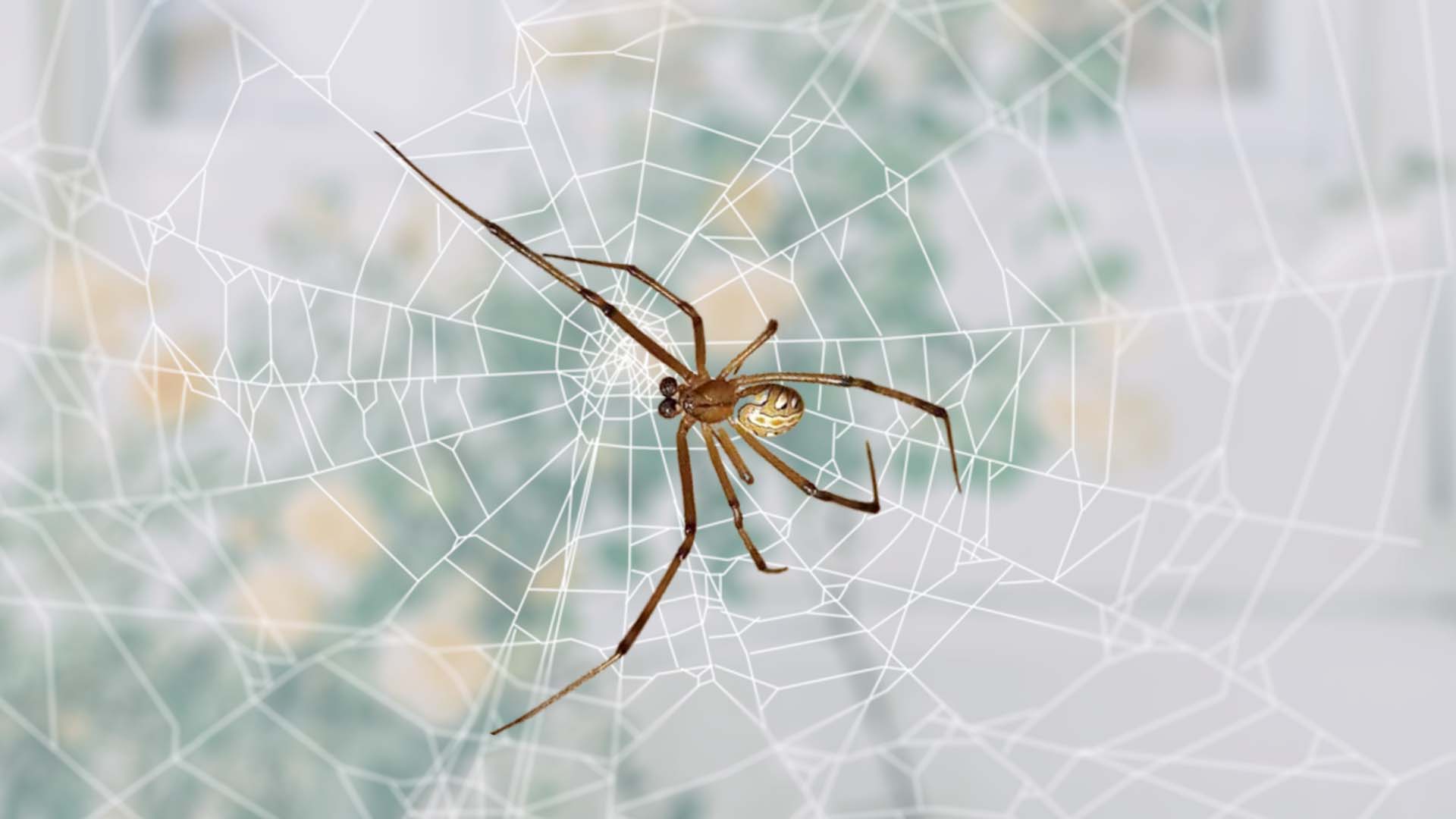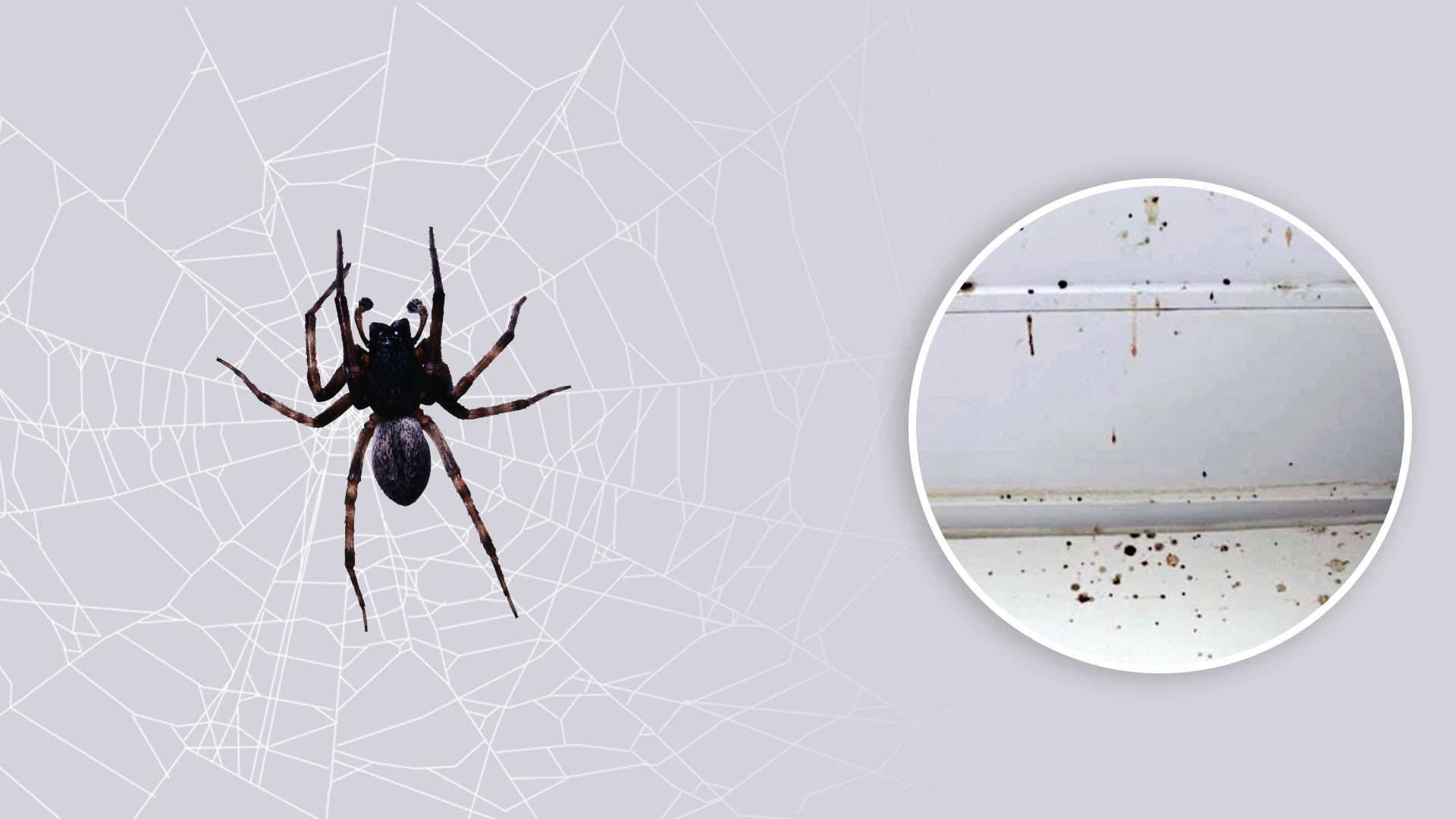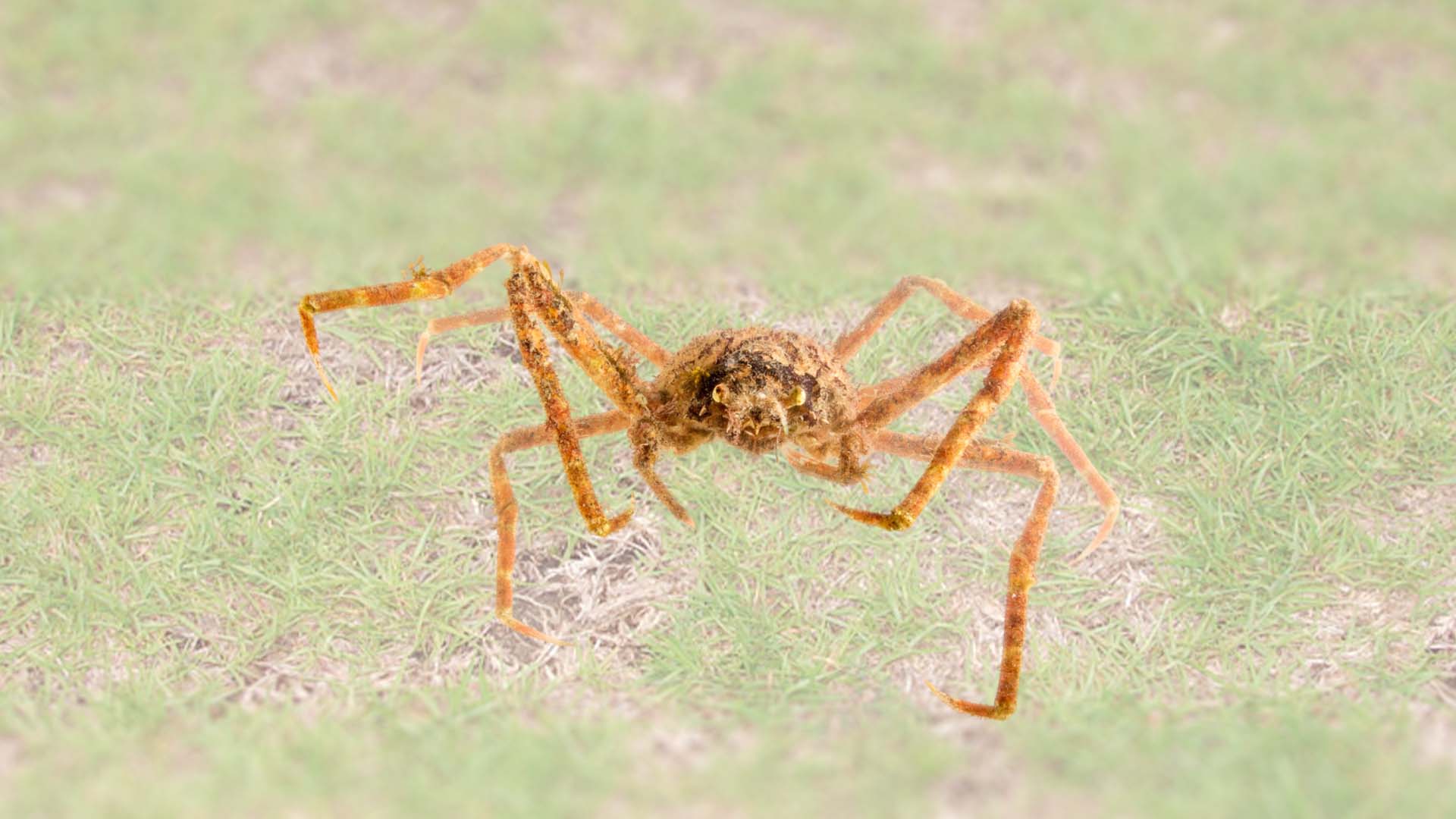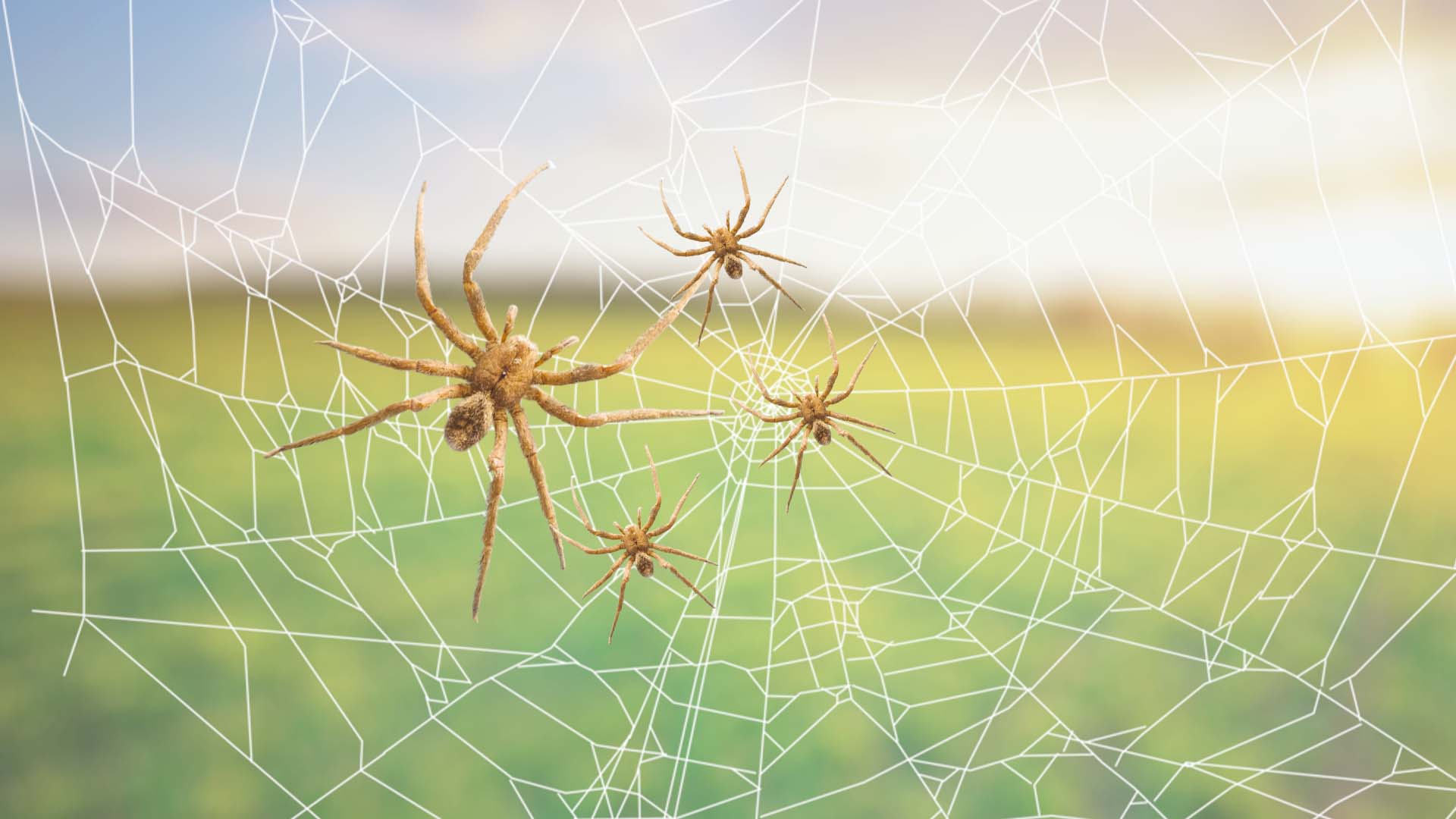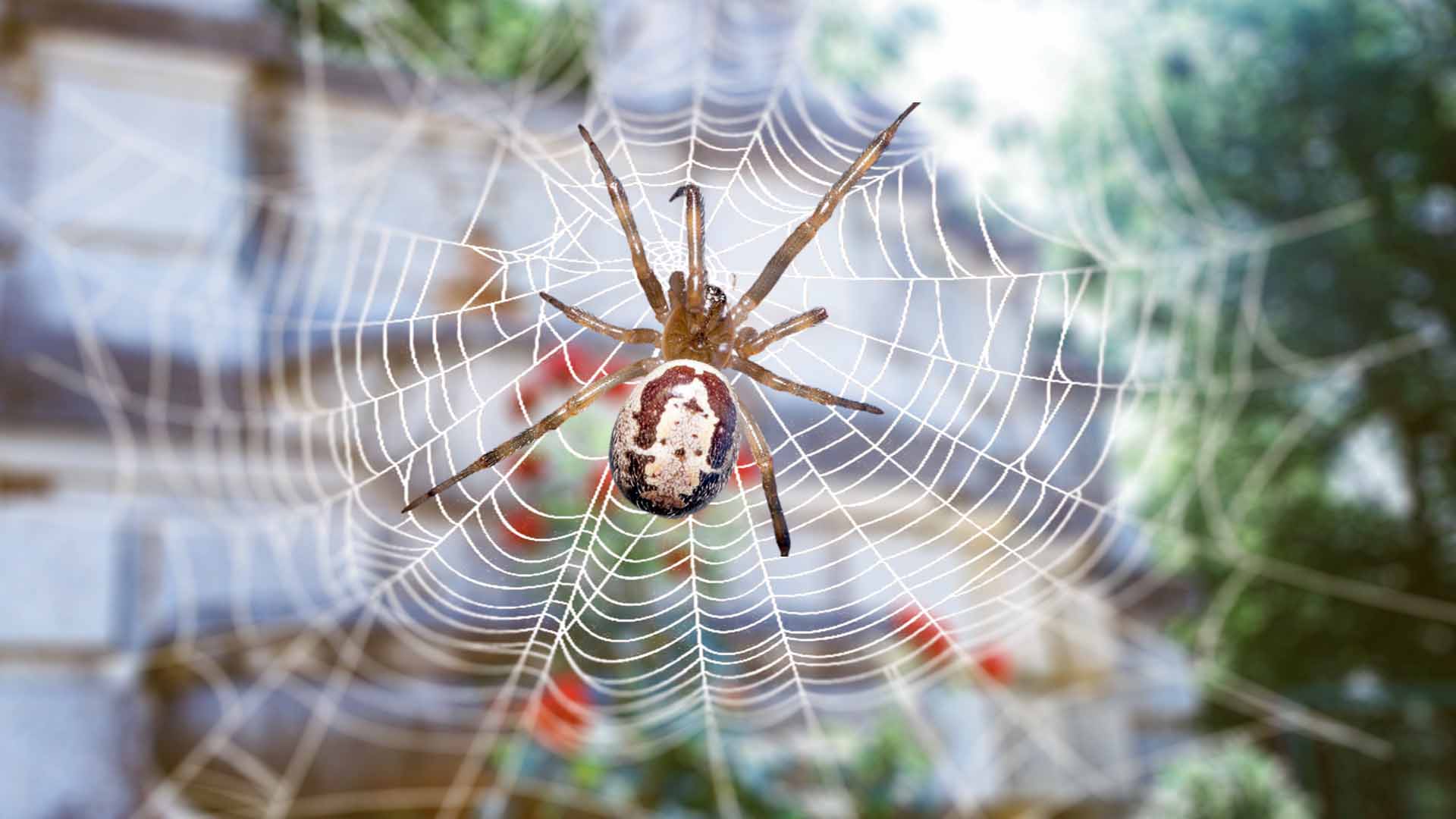The Black Widow spider, notorious for its venomous bite and distinctive red hourglass shape, is often a source of fear and intrigue. However, beneath its menacing reputation lies a world of fascinating details waiting to be explored.
In this article, we will discuss – how to identify the male Black Widow spider. So first, you have to know – What Do Male Black Widows Look Like? Let’s get started.
What Do Male Black Widows Look Like?
Male Black Widows are significantly smaller than females, with a body length of about 1/4 to 1/3 the size. Their coloration is less distinct, often grayish or brownish with lighter markings. Unlike females, they lack the iconic red hourglass shape on their abdomen. Male Black Widows have enlarged pedipalps, which resemble small boxing gloves, used for mating. Identifying these differences is crucial for safety, as male Black Widows possess less potent venom and are less likely to bite.
Characteristics of Male Black Widows
Size Comparison with Female Black Widows: Male Black Widows are considerably smaller than their female counterparts, with their bodies measuring approximately half an inch in length, excluding the legs. In contrast, female Black Widows can measure up to one and a half inches, making the size difference quite evident.
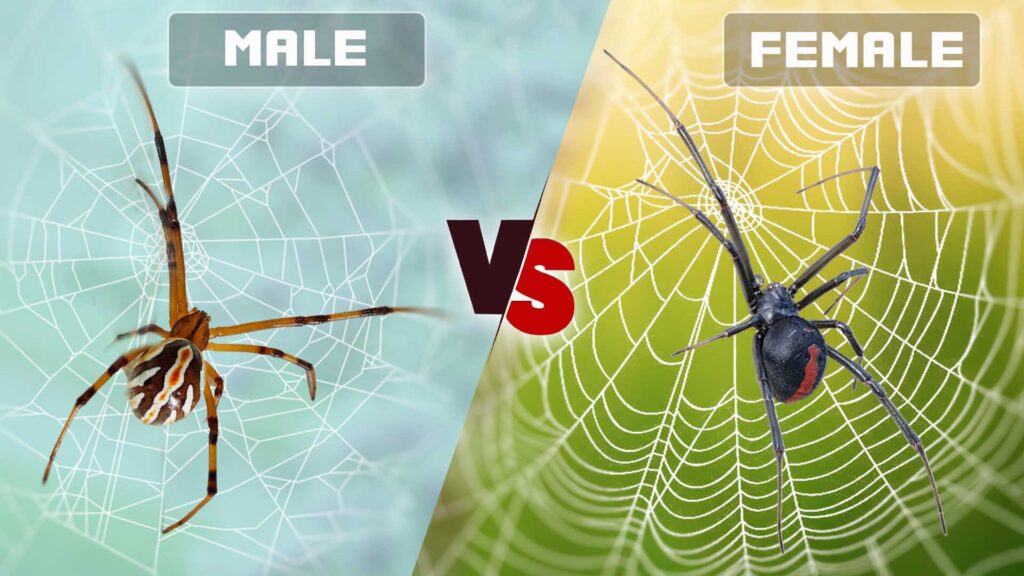
Coloration and Patterns on the Body: While female Black Widows are known for their shiny black bodies adorned with the iconic red hourglass marking on the underside of their abdomen, male Black Widows boast a more intricate and variable color palette. Their bodies often feature shades of gray, brown, and sometimes even reddish hues, making them less conspicuous compared to the females.
Leg Structure and Appearance: Male Black Widows’ legs exhibit a unique feature that aids in identification: the presence of tibial hooks. These modified leg structures are used during mating rituals and differentiate male Black Widows from other spider species.
7 Key Differences Between Male and Female Black Widows
| Characteristic | Male Black Widows | Female Black Widows |
| Size | Smaller, around half an inch in length | Larger, up to one and a half inches |
| Coloration | Varied shades of gray, brown, and red | Shiny black with red hourglass marking |
| Abdominal Patterns | Less prominent patterns and markings | Distinct red hourglass on abdomen |
| Leg Structure | Tibial hooks present | Tibial hooks absent |
| Venom Potency | Weaker venom potency | Stronger venom potency |
| Web-building Patterns | Irregular, less intricate webs | Orb-shaped, intricate webs |
| Mating Behavior | Initiates courtship rituals | Passively waits for male’s approach |
Male Black Widow Identification Spet by Step Process
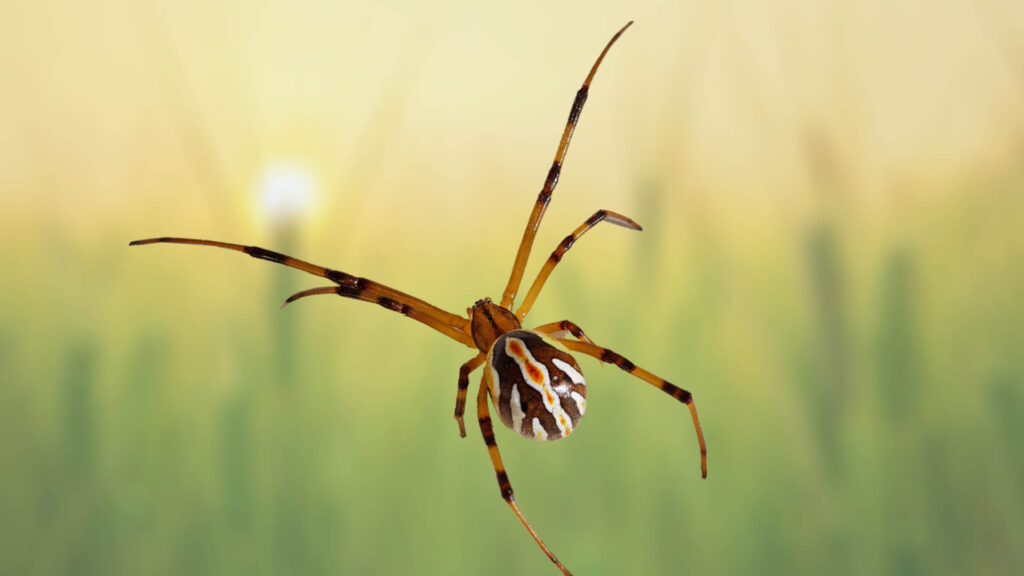
Identifying male Black Widow spiders involves observing specific characteristics that set them apart from their female counterparts. Follow this step-by-step process to correctly identify male Black Widows:
Step 1: Size Comparison
Male Black Widows are notably smaller than females. Compare the spider’s body size to that of a female Black Widow. Males typically have a body length of around 1/4 to 1/3 the size of a female.
Step 2: Coloration and Markings
Observe the spider’s coloration. Male Black Widows are often less vibrant and may appear grayish or brownish with lighter markings. Look for any distinctive patterns on the cephalothorax (the front part of the body) and abdomen.
Step 3: Abdomen Shape
Check the shape of the abdomen. Unlike female Black Widows, males lack the well-known red hourglass shape on their abdomen. Instead, their abdomen tends to be more elongated and less bulbous.
Step 4: Leg Structure
Examine the structure of the spider’s legs. Male Black Widows usually have longer, thinner legs compared to the robust legs of females. Pay attention to any leg markings or patterns.
Step 5: Enlarged Pedipalps
Focus on the spider’s pedipalps, which are located near the mouthparts. Male Black Widows have enlarged pedipalps that resemble small boxing gloves. These structures play a crucial role in mating.
Step 6: Spinnerets
Check for the presence of spinnerets, which are located at the rear end of the spider. Male Black Widows possess spinnerets, but they are generally smaller and less prominent compared to females.
Step 7: Behavior and Web Building
Observe the spider’s behavior and web-building habits. Male Black Widows tend to build irregular, smaller webs closer to the ground, while females create larger, more organized webs. Note any courtship rituals or interactions with potential mates.
Step 8: Seek Expert Opinion
If you’re uncertain about the spider’s identification, consider consulting an expert in arachnology or entomology.
Step 9: Safety Precautions
While identifying male Black Widows, maintain caution and avoid direct contact. Use appropriate tools or containers to handle the spider, and take necessary safety precautions to prevent accidental bites.
By following these steps, you can accurately identify male Black Widow spiders and distinguish them from females.
Behavioral Traits of Male Black Widows
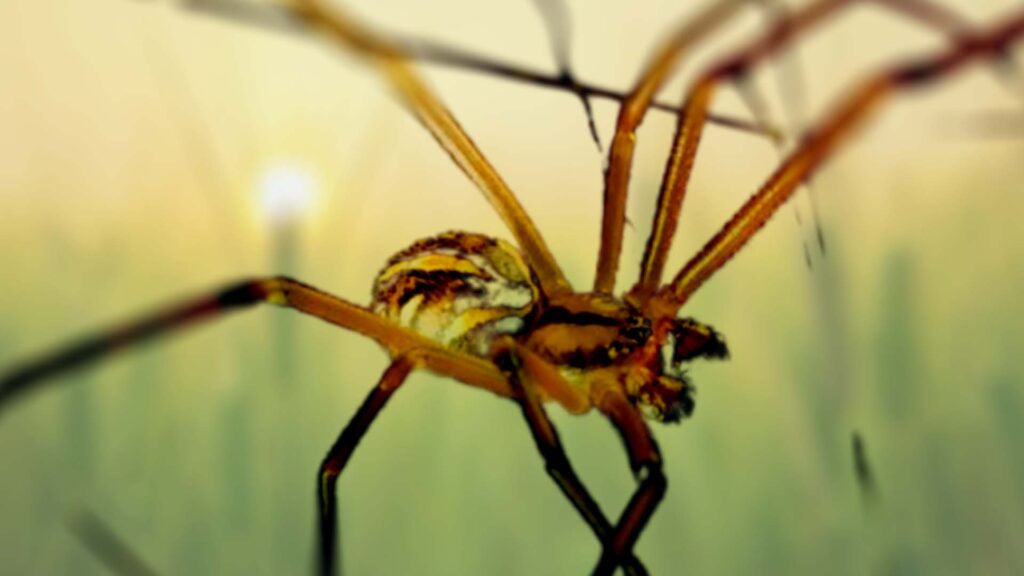
Male Black Widows are not known for their elaborate web-building skills like their female counterparts. Instead, they often wander in search of females and rely on silk trails to mark their paths, making their web patterns less prominent and intricate.
Male Black Widows employ a cautious approach during courtship rituals to avoid being mistaken for prey and subsequently cannibalized by the females. They vibrate their webs to communicate their presence and intentions, allowing the females to recognize them as potential mates.
Cannibalism is a known risk during mating for male Black Widows, as females might sometimes mistake them for prey. However, their use of vibrational signals and careful approach minimizes this risk, ensuring a higher chance of successful mating.
Geographic Distribution and Habitat
Male Black Widows are found across various regions of the world, including North and South America, Europe, Africa, and Asia. Their distribution overlaps with that of female Black Widows, but their elusive nature often makes them harder to spot.
Male Black Widows prefer hiding places like crevices, under rocks, and in vegetation. They often inhabit the outskirts of female Black Widow territories, seeking opportunities for courtship and mating without the risk of being consumed.
FAQ
Is the male Black Widow poisonous?
Yes, male Black Widows are indeed venomous, but their venom is considerably weaker compared to that of females. Their venom is primarily intended for subduing prey rather than defense, and their bites are rarely harmful to humans. While a bite might cause mild discomfort, it is unlikely to pose a serious threat.
Are male Black Widows small?
Yes, male Black Widows are indeed smaller than their female counterparts. Their bodies typically measure around half an inch in length, excluding their legs. This size difference is a crucial factor in distinguishing between male and female Black Widows. You may also be interested to know about Phidippus Audax Male vs Female.
Conclusion
The world of male Black Widows remains shrouded in mystery, often overshadowed by the infamy of their female counterparts. Through a deeper exploration of their characteristics, behaviors, and ecological significance, we come to appreciate the intricate roles these spiders play in maintaining the delicate balance of nature. By dispelling misconceptions and embracing their presence, we can coexist harmoniously with these enigmatic creatures while contributing to the preservation of our ecosystems.

